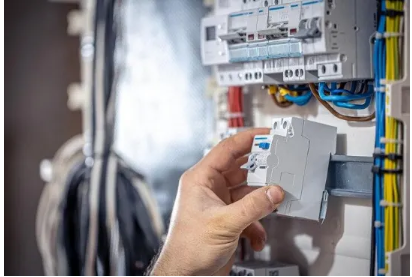Knowing Electrical Schematics Symbols
Knowing Electrical Schematics Symbols. Looking at an electrical diagram initially can feel like learning a foreign language. One becomes overwhelmed easily among lines intersecting at sharp angles, abstract forms, and cryptic lettering. These diagrams start to make perfect sense, though, with some direction. Actually, first step in learning electrical design or safe troubleshooting is knowing the symbols behind popular components.
Fuses and circuit breakers are two of the most important components of any electrical design. Though they seem identical, they have diverse uses and are shown by different symbols that you will repeatedly find in schematics. This article will walk over what these elements accomplish, how to identify them in diagrams, and why they are important.
Describe a circuit breaker here.
An automatic switch made to guard an electrical circuit from overload or short circuit is a circuit breaker. The breaker “trips,” therefore stopping the flow of electricity to prevent overheating or fire, when current reaches a safe threshold.
Circuit breakers can be reset unlike fuses, which have to be replaced when they blow; this makes them more practical in home, business, and manufacturing systems.
Usually accompanied by a label or ampere rating, the circuit breaker sign is shown in electrical schematics as a line with a break and a little arc or angle. Understanding this symbol enables hobbyists, electricians, and engineers to rapidly find protection locations in a circuit.
Fuse: What is it?
Made of a thin metal wire sealed in a casing, a fuse is a safety tool. Though in a far simpler manner, it serves a similar purpose to a circuit breaker—interrupting electrical flow when the current rises above a safe level. Once a fuse “blows, the wire inside melts and the whole fuse has to be replaced.
Electronics, automotive applications, and devices where space or cost makes circuit breakers unfeasible nonetheless make frequent use of fuses.
In schematics, the fuse sign often shows as a straight line with a little oval or rectangle around it. The type of fuse—cartridge, glass tube, etc.—determines the variety; the basic idea is a single-use overcurrent protection mechanism.
Why Knowledge of These Symbols Counts?
Understanding important symbols like the circuit breaker symbol and fuse symbol guarantees you whether you are a student working on an electronics project or an electrician reviewing blueprints:
Interpret electrical protection techniques inside a system quickly.
When building or changing circuits, avoid safety risks.
Troubleshoot successfully by knowing which element might have stopped the flow.
Speak precisely with others using the global language of schematics.
Safety is actually one of the key factors driving standardizing of these symbols throughout the electrical sector. Professionals can take the necessary safety measures before working on live circuits by fast spotting protection elements.
Key Comparisons: Circuit Breakers vs. Fuses
Both guard circuits from overcurrent, however their features differ in most important respects:
Learning to Read Electrical Symbols: Techniques
- Here are some pointers if you wish to start reading schematics more confident:
- Consult internet symbol libraries. Quickly interpreting new diagrams will depend on bookmarking reference sources that thoroughly explain symbols.
- Start with simple circuits; consider looking at basic diagrams with simply power supply, resistors, fuses, and switches.
- Write your own sketch. Making your own circuit diagrams and naming every component helps you to remember clearly.
- Test practical relations – Open old electronics (safely) and try translating what you observe to schematic designs.
- See also Midland Texas Communities Supporting Recovery Journeys, Rehabilitation
- Both beginners and experts should find resources like the Oohmage platform perfect since they offer clear images and thorough symbol descriptions.
Thoughts on Final Notes
Whether you are creating your own electronics, fixing an item, or wiring a new space, a fundamental ability that pays dividends is knowing basic electrical symbols. Knowing how to read a circuit breaker symbol or identify a fuse symbol will help you build more dependable systems, work safer, and troubleshoot faster.
If you are just beginning your trip through electrical engineering, learn schematics second. Every line, if you know how to interpret it, tells a tale.
